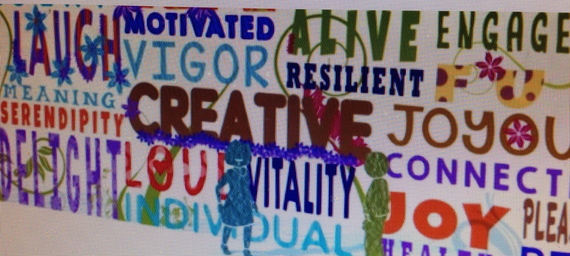I'm happy to say that seniors are finally getting some respect! Until recently, public media often portrayed aging inaccurately as an inevitable negative and pathological condition while giving little attention to the pleasures and benefits of this later life stage. Maybe we should thank AARP's lobbies in Washington or a generation of Boomers who are just coming of age. I just attended a couple of events that give me hope. I think we've turned the corner and can now extol the virtues of positive aging.
I was fortunate to attend a convening of philanthropic, art, and community leaders at "Artful Aging: The Transformative Power of Creativity," co-sponsored by Aroha Philanthropies and the Hewlett Foundation. The goal of the one-day event was to highlight the benefits of creative aging programs that "inspire and enable older adults to learn, make and share the arts in ways that are novel, complex and socially engaging."
There's increasing recognition that art in its many forms (music, dance, theater, writing and visual arts) benefits seniors emotionally, cognitively and socially in ways that are beginning to show bottom line results. Only recently have research studies begun to validate that participation in the arts is really good for the aging body, psyche and brain and therefore a good investment. Aroha unveiled a brief documentary highlighting the shift toward appreciating the aging process and the enhanced wisdom characteristic of this life stage. Titled The Wall, this animated video blew me away with its upbeat, inspirational message. Watch this three-minute charmer here or here.
Throughout the day, several very unique approaches to creative aging were presented by the speakers; everything from partnership with libraries (Lifetime Arts Inc.), and senior art colonies (EngAGE), to lifelong learning programs (Osher Foundation), and community music programs. Philanthropic organizations like co-sponsor, Aroha, drove the forward momentum of this exciting movement.
Those of us over 55 can look forward to ever more programming in the arts, available and supported by growing community and government involvement. Even cities are clamoring for the designation "age-friendly," a designation based on the World Health Organization's Global Network of Age Friendly Cities and Communities. See the list of U.S. cities compiled by AARP here.
By providing culturally enriched programming involving seniors, in an environment that appreciates and values its older residents, these age-friendly cities position themselves to welcome new retirees looking for a good quality of life as they age. This is a win-win for everyone.
I left the Artful Aging event fueled with optimism about the shift in attitudes toward the aging population. Pretty soon people over 55 will outnumber other age groups, at least in the U.S. It's nice to know we'll also have a bit more respect.
The very next day I attended a lecture by Adam Gazzaley, MD, PhD, a professor of Neurology, Physiology and Psychiatry at the University of California, San Francisco titled "Harnessing Plasticity of the Older Brain to Enhance Cognition." From its title you might have thought it targeted an audience of professors, doctors, and other brainy types but the audience was almost entirely comprised of gray haired non-scientists interested in learning how to stimulate their own brain function for the long haul. It was held at the Jewish Community Center of San Francisco and it was open to the public.
Dr. Gazzaley focused on the development of several new video-type games including one that is meditation focused and another related to music by using rhythm to enhance brain function. While these "games" are still being developed and tested, the initial results are very promising. Staying sharp as we age is not only possible it's going to be the new norm. Gazzaley emphasized that sitting at a computer isn't enough, though. Aerobic exercise, combined with stepping out of your comfort zone to create a bit of stress is both necessary and good for the brain.
Happily, growing older is looking a lot more promising, interesting, and even exciting.
